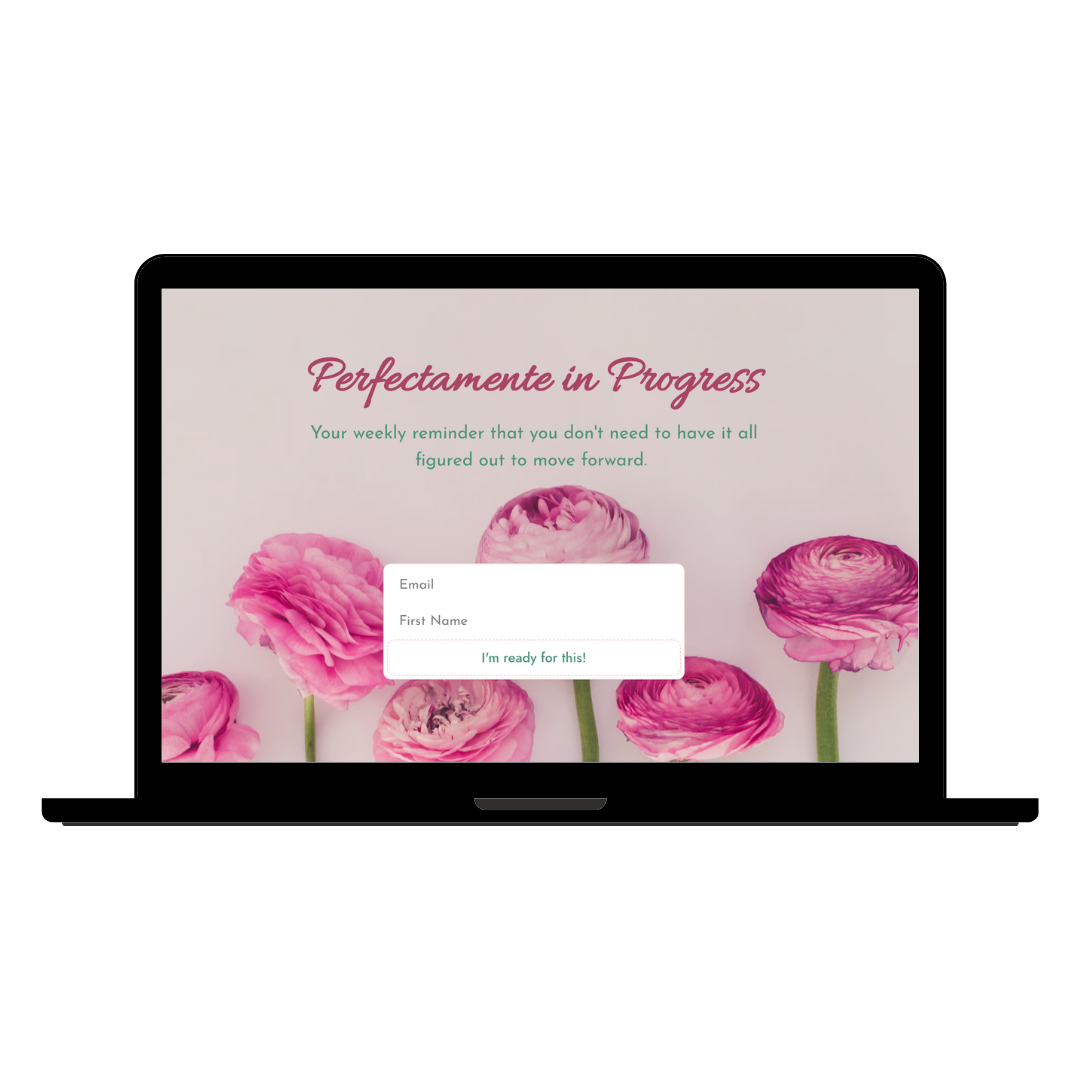5 Ways to Find Joy When Life Gets Overwhelming
You know those weeks when everything feels like it’s happening at once? Your work inbox is exploding, family drama is brewing, your to-do list has a to-do list, and the news cycle is making your anxiety spike. During times like these, someone inevitably tells you to “focus on the positive,” and you want to scream because HOW exactly are you supposed to do that when your world feels like it’s spinning out of control?
Here’s the thing: finding joy when life gets overwhelming isn’t about toxic positivity or pretending everything is fine. It’s about cultivating small, accessible moments of lightness that can anchor you during difficult times. It’s about building what I call “joy resilience”—the ability to notice and create happiness even when circumstances aren’t ideal.
Because here’s what I’ve learned: joy isn’t something that happens to you when your life gets perfect. It’s something you practice, especially when things get messy.
Why Joy Matters More When Life Gets Hard
Before we dive into the practical strategies, let’s talk about why actively seeking joy during difficult times isn’t frivolous—it’s essential.
When we’re overwhelmed, our nervous system gets stuck in survival mode. Everything feels urgent, we lose perspective, and we start operating from a place of scarcity and fear. In this state, we make decisions from panic rather than wisdom, and we miss opportunities for connection, creativity, and growth.
Joy acts like a reset button for your nervous system. It doesn’t solve your problems, but it helps you approach them from a clearer, more grounded place. When you’ve had even a few minutes of genuine lightness, you’re better equipped to handle whatever life throws at you.
This is especially important for those of us carrying extra weight—whether that’s being the first in our family to navigate certain professional spaces, supporting family members financially or emotionally, or dealing with systemic challenges that others don’t face. Joy becomes an act of resistance, a way of reclaiming your humanity in spaces that might try to reduce you to your productivity or your problems.
5 Practical Ways to Find Joy When Everything Feels Like Too Much
1. Master the Art of Micro-Joys
When life is overwhelming, the idea of planning a whole joyful day can feel impossible. But what about finding 30 seconds of delight? Micro-joys are tiny moments of pleasure that don’t require planning, money, or even much time.
Examples of micro-joys:
- The first sip of morning coffee when it’s exactly the right temperature
- A text from a friend that makes you smile
- That perfect song that comes on shuffle
- The feeling of taking off uncomfortable shoes at the end of the day
- Your pet doing something adorable
- Finding money in an old jacket pocket
- The moment when you finally understand something that was confusing you
How to practice: Set a gentle reminder on your phone to notice one micro-joy each day. Don’t force it—just pay attention when small pleasant things happen. The act of noticing trains your brain to spot joy even during difficult times.
Why it works: Micro-joys are always available, even during your worst days. They’re too small for your anxious mind to argue with (“I don’t have time for this!”) but powerful enough to shift your nervous system state.
2. Create “Joy Anchors” Throughout Your Day
Joy anchors are predetermined moments when you intentionally invite lightness into your routine. Unlike micro-joys, which you notice as they happen, joy anchors are proactive practices you build into your day.
Morning joy anchor: Before checking your phone or diving into your to-do list, do one thing that makes you smile. Maybe it’s playing a favorite song, looking at photos that make you happy, or spending a minute with your plants.
Midday joy anchor: Set a reminder to do something playful during your lunch break or afternoon slump. This could be watching funny videos, calling someone who makes you laugh, or doing a quick dance party in your living room.
Evening joy anchor: Create a transition ritual that helps you shift from work mode to rest mode. Maybe it’s changing into comfy clothes while playing music you love, making yourself a special tea, or watching a show that consistently makes you laugh.
Weekend joy anchor: Protect one activity each weekend that’s purely for enjoyment—no productivity goals, no shoulds, just something that brings you genuine pleasure.
Why it works: Joy anchors ensure that even during chaotic times, you have touchstones of lightness built into your day. They’re appointments with yourself that prioritize your emotional well-being.
3. Embrace “Joy Stacking”
Joy stacking is the practice of layering small pleasures together to amplify their impact. Instead of just having coffee, you have coffee from your favorite mug while listening to music that makes you happy in a spot where the light is nice.
Examples of joy stacking:
- Making dinner while playing music you love and using ingredients that smell amazing
- Taking a bath with good lighting, a favorite podcast, and something delicious to drink
- Going for a walk in a beautiful location while calling a friend who makes you laugh
- Working on a project while wearing clothes that make you feel good and having a snack you enjoy
The key is intentionality: You’re not just multitasking—you’re deliberately combining elements that bring you pleasure to create a richer experience of joy.
Why it works: When you’re overwhelmed, it can feel impossible to carve out large chunks of time for self-care. Joy stacking allows you to infuse necessary activities with pleasure, making your entire day feel more nourishing.
4. Practice “Joy Hoarding” (The Good Kind)
When life is unpredictable, it helps to have a collection of reliable joy sources that you can access anytime. This isn’t about material hoarding—it’s about creating an emotional emergency kit.
Create these joy collections:
- Digital joy folder: Save funny memes, inspiring quotes, photos that make you smile, videos that never fail to make you laugh, voice messages from people you love.
- Physical joy box: Keep items that bring you comfort and happiness—letters from friends, small objects with happy memories, photos, anything that instantly lifts your mood when you touch it.
- Joy playlist: Curate songs that consistently make you feel good. Include childhood favorites, songs that make you want to dance, and music that connects you to happy memories.
- Joy contact list: Identify the people in your life who reliably make you feel lighter and happier. When you’re overwhelmed, reach out to one of them.
- Sensory joy toolkit: Keep items that engage your senses in pleasant ways—a special lotion that smells amazing, a soft blanket, good chocolate, herbal tea you love.
Why it works: When you’re in the middle of a crisis, your brain isn’t great at remembering what makes you happy. Having pre-curated joy collections removes the decision-making burden and gives you immediate access to things that reliably lift your spirits.
5. Find Joy in Connection and Community
When life gets overwhelming, our instinct is often to isolate and power through alone. But some of the most accessible joy comes from connecting with others, even in small ways.
Low-pressure social joy:
- Send a voice message to a friend sharing something that made you smile
- Comment genuinely on social media posts from people you care about
- Text someone a photo of something beautiful you noticed
- Call a family member who always makes you laugh
- Join online communities where you can share what you’re going through
Shared experience joy:
- Watch the same show as a friend and text about it
- Cook the same recipe as someone you love and compare results
- Read the same book and discuss your thoughts
- Take photos of the same prompt (sunset, coffee, pet) and share them
Acts of service joy:
- Do something small and kind for someone else—it often creates joy for both of you
- Leave an encouraging comment for someone who seems to be struggling
- Send a thank you message to someone who’s made a difference in your life
Why it works: Joy shared is joy multiplied. Even when you’re overwhelmed, connecting with others reminds you that you’re not alone and that there’s still goodness in the world worth celebrating.
Making Joy Sustainable During Difficult Times
Start Where You Are
You don’t need to implement all these strategies at once. Choose one that feels most accessible right now and experiment with it for a week. Maybe you’re someone who connects to music, so you start with creating joy anchors around songs you love. Maybe you’re visual, so you begin by noticing micro-joys throughout your day.
Give Yourself Permission
Sometimes the biggest barrier to joy during difficult times is guilt. We think we don’t deserve to feel good when we’re struggling, or when others are suffering, or when we have so much to do. But joy isn’t earned—it’s a basic human need. You’re not being irresponsible by seeking moments of lightness; you’re being wise.
Expect Resistance
Your overwhelmed brain might resist these practices. “I don’t have time for this,” it might say, or “This is silly.” That’s normal. Start smaller than feels necessary and be patient with yourself. Sometimes the most revolutionary thing you can do is insist on moments of joy when everything feels serious and urgent.
Adapt to Your Reality
Your joy practice will look different depending on what you’re dealing with. If you’re caring for a sick family member, your micro-joys might be even smaller and more precious. If you’re dealing with financial stress, your joy sources might be entirely free. If you’re navigating workplace toxicity, your joy anchors might be the things that remind you of who you are outside of that environment.
Joy as Resistance and Resilience
For many of us, especially those navigating challenging circumstances or systemic inequities, choosing joy isn’t just personal care—it’s an act of resistance. It’s refusing to let difficult circumstances rob you of your full humanity. It’s insisting that you deserve lightness and pleasure even when the world feels heavy.
Joy also builds resilience. When you practice finding moments of happiness during small stresses, you’re developing the skill to access joy during bigger challenges. You’re training your nervous system to remember that difficult feelings aren’t permanent and that you have agency in how you experience your life.
This doesn’t mean you should suppress difficult emotions or pretend everything is fine. It means you can hold space for both grief and gratitude, stress and small pleasures, overwhelm and moments of lightness.
Your Joy Practice Starts Now
Here’s your assignment for this week: Choose one joy strategy from this post and commit to trying it for seven days. Notice what happens—not just to your mood, but to your perspective, your energy, your ability to handle whatever you’re dealing with.
Maybe you’ll discover that three minutes of dancing in your kitchen can shift your entire morning. Maybe you’ll find that texting a photo to a friend creates connection you didn’t know you needed. Maybe you’ll realize that joy isn’t something that happens to you—it’s something you can create, even when life feels like a lot.
Remember: seeking joy during difficult times isn’t selfish or naive. It’s a survival skill. It’s a way of honoring your whole self, not just the parts that are struggling. And sometimes, it’s the very thing that gives you the strength to keep going.
Remember: Your joy matters. Not just because it serves others, but because you deserve to experience the full spectrum of being human, including happiness.
Subscribe to the Newsletter








